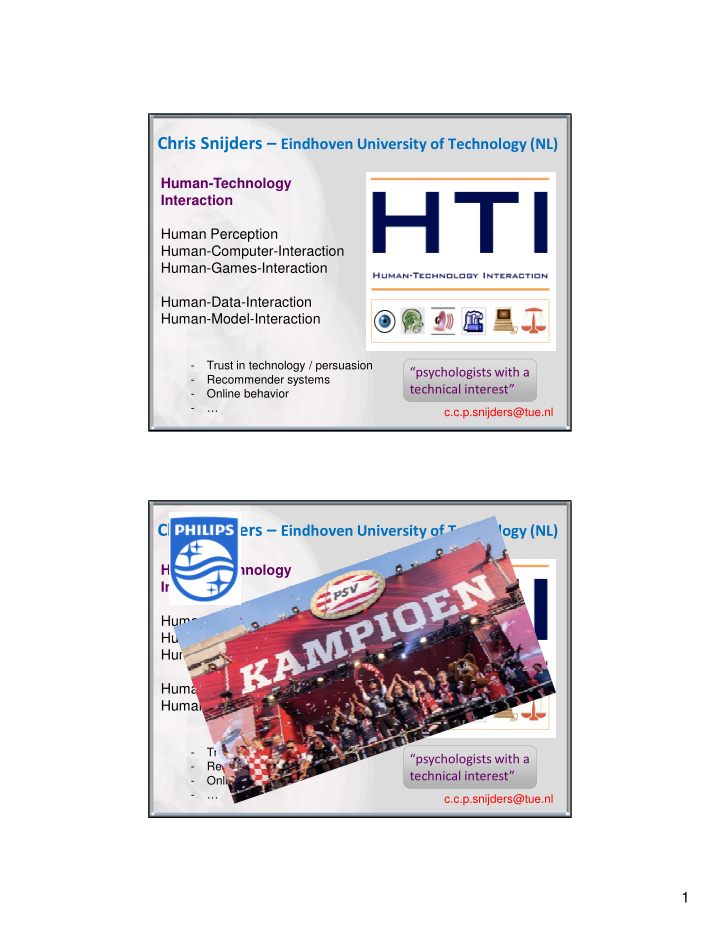



Chris Snijders – Eindhoven University of Technology (NL) Human-Technology Interaction Human Perception Human-Computer-Interaction Human-Games-Interaction Human-Data-Interaction Human-Model-Interaction - Trust in technology / persuasion “psychologists with a “psychologists with a - Recommender systems technical interest” technical interest” - Online behavior - … c.c.p.snijders@tue.nl Chris Snijders – Eindhoven University of Technology (NL) Human-Technology Interaction Human Perception Human-Computer-Interaction Human-Games-Interaction Human-Data-Interaction Human-Model-Interaction - Trust in technology / persuasion “psychologists with a “psychologists with a - Recommender systems technical interest” technical interest” - Online behavior - … c.c.p.snijders@tue.nl 1
Chris Snijders – Eindhoven University of Technology (NL) Human-Technology Connection of abstract representation of Interaction Connection of abstract representation of data to user mental-states data to user mental-states Human Perception >> with Philips: air purifier data being >> with Philips: air purifier data being Human-Computer-Interaction used to understand users used to understand users Human-Games-Interaction >> learning data: logs of the click-stream >> learning data: logs of the click-stream of students in a learning environment of students in a learning environment Human-Data-Interaction Human-Model-Interaction >> online users in web stores: how can >> online users in web stores: how can we understand what kind of user they we understand what kind of user they are (how soon can we do this) are (how soon can we do this) “psychologists with a “psychologists with a technical interest” technical interest” c.c.p.snijders@tue.nl Chris Snijders - Irrelevant private stuff 2
Chris Snijders – @Dagstuhl The models themselves are the smaller part of the problem: technology alone is not enough. You can have models but that need not imply that they are used. In my area, perhaps also in yours, there is more to gain by understanding the people who use these models better. Humans s&^ck at many tasks – but there might be consistency to their madness. Can’t these models be used for other uses than “just” improving the process? Personalization: what (types of models) work for which user? What determines whether people trust a model? 3
Recommend
More recommend